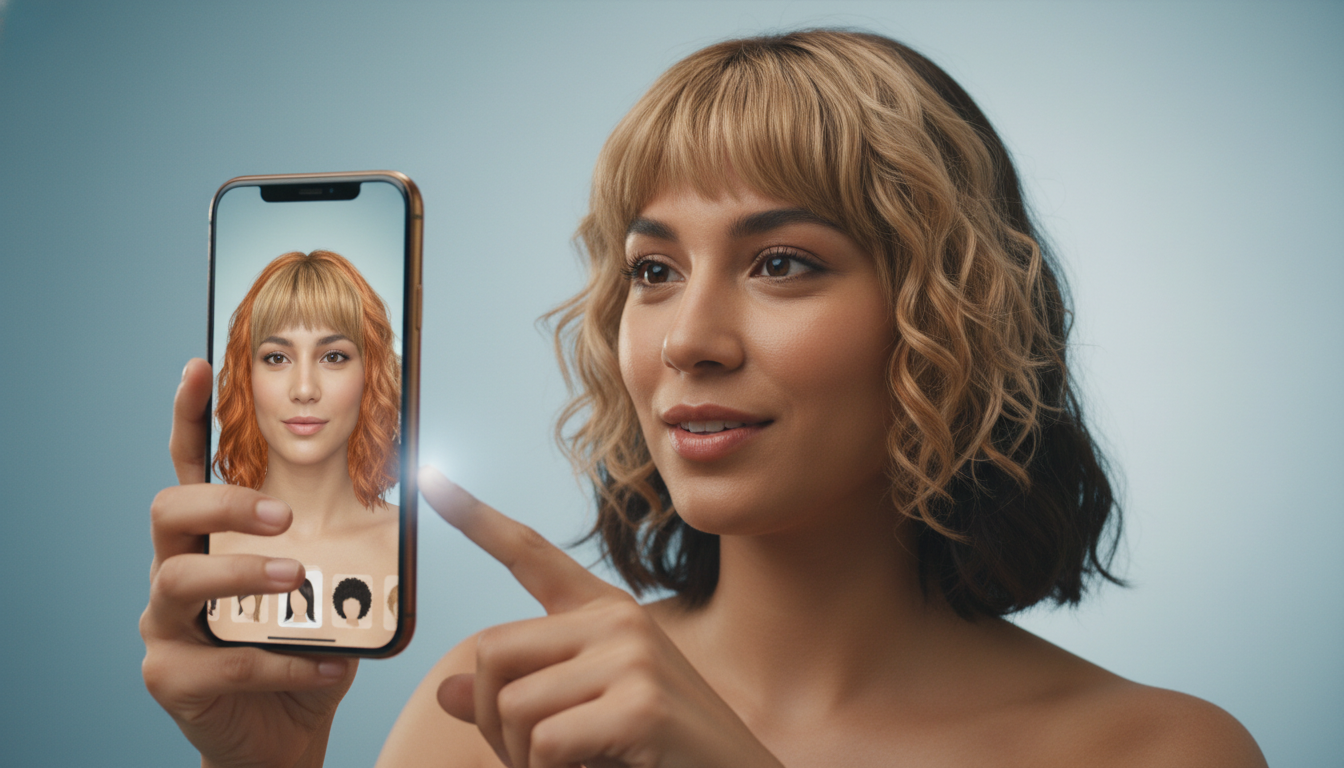What is an AI hairstyle generator and why it matters? AI hairstyle generator is a class of image-synthesis and vision applications that generate or transfer hairstyles onto user photos or live camera feeds to simulate haircuts, colors, and styles in realistic detail. These tools combine face detection, hair segmentation, generative models, and AR rendering so consumers and salons can preview looks before committing to a cut or color. In 2025 the technology is used by consumers, e-commerce platforms, and professional salons to reduce decision friction, lower return rates for beauty products, and increase appointment conversion.
How does an AI hairstyle generator technically work
AI hairstyle generators implement a multi-stage pipeline: face & hair detection, semantic segmentation, style specification, generative synthesis, and final photorealistic compositing. The detection stage uses facial landmark models (e.g., MediaPipe or dlib) to align input images and normalize pose. Segmentation isolates hair regions with U-Net or transformer-based segmentation models to create masks that guide synthesis and preserve identity. The synthesis step typically uses diffusion models or GAN variants to generate hair geometry, texture, and color; compositing applies relighting and edge blending to integrate generated hair seamlessly with skin and background.
Which generative architectures power realistic hair results
State-of-the-art systems use diffusion models and GANs, often combined with conditional inputs (segmentation masks, sketches, or reference images). Diffusion models (as in Imagen-style research) offer high-fidelity photorealism and controllability for color and texture edits, while StyleGAN lineage excels at controllable latent-space manipulations for hairstyle prototypes. Many production apps also use hybrid pipelines: a segmentation-guided generator (ControlNet-like conditioning) plus an image-to-image refinement network to improve hair-fiber detail and lighting consistency. For foundational research references, see OpenAI DALL·E, Imagen (Google Research), and StyleGAN2 (NVIDIA).

What product patterns and UX features do users expect
Users expect instant previews, realistic hair fiber detail, accurate color rendering, and identity preservation across angles. Common product features include:
- Live AR try-on (camera feed overlays) with head-tracking
- Static photo editing for hairstyle libraries and inspiration
- Color sampling from reference images and spectrum sliders
- Save/share and salon-booking integrations
Leading consumer apps demonstrated in market listings include HairstyleAI and HairApp, which emphasize quick transforms and large template libraries.
Where are AI hairstyle generators deployed and who benefits most
Deployment contexts include mobile apps (iOS/Android), web try-on widgets for e-commerce, and in-salon kiosks or tablets. Primary beneficiaries are:
- Consumers who want risk-free experimentation before a haircut or color
- E-commerce platforms selling wigs, hair color, and accessories to reduce returns
- Salons and stylists for remote consultations and marketing try-ons
- Cosmetic brands for virtual product trials and personalized recommendations

What are the main technical and ethical risks to assess
AI hairstyle generators face technical limits and ethical concerns that product teams must measure and mitigate. Technical risks include lighting mismatch, occlusion handling (hands, glasses), inaccurate segmentation for complex hairstyles, and poor cross-angle consistency. Ethical and business risks include dataset bias (poor performance on certain hair textures or skin tones), privacy of uploaded photos, and potential misuse for deepfakes. Address these by curating balanced datasets, publishing model performance across demographic slices, and implementing on-device processing or secure deletion policies.
How to evaluate or build an AI hairstyle generator: practical checklist
This checklist helps product managers and engineers assess vendors or build an in-house solution:
1. Data and fairness: ensure datasets include diverse hair types, textures, ages, and skin tones; measure per-group accuracy.
2. Model choice: start with a diffusion-based image-to-image model conditioned on hair masks for best photorealism; consider StyleGAN components for template generation.
3. Real-time constraints: for mobile AR, optimize with quantization, pruning, and mobile backends (TensorFlow Lite, Core ML, ONNX); offload heavy synthesis to cloud with latency SLAs when needed.
4. Evaluation metrics: use FID and LPIPS for perceptual quality, plus human A/B tests for user preference and retention.
5. Privacy and compliance: provide local inference options, GDPR-compliant data handling, and transparent image retention policies.
What are deployment trade-offs: cloud vs on-device
Cloud inference allows larger models and faster iteration but increases latency, cost, and privacy concerns. On-device inference (Core ML, TensorFlow Lite) improves privacy and interactivity but demands model compression and careful engineering. Hybrid patterns are common: run segmentation and tracking on-device and perform final high-fidelity synthesis in the cloud, returning an optimized composited result.
Actionable recommendations for product teams in 2025
- Prioritize hair-type coverage in dataset collection and include dermatologists or hair specialists when labeling complex textures.
- Use segmentation-conditioned diffusion models for highest realism; fine-tune on curated hairstyle datasets.
- Offer both photo and live AR modes and measure conversion lift for each flow.
- Implement privacy-by-design: ephemeral uploads, client-side preprocessing, and clear opt-in consent.
- Track product KPIs: try-on rate, booking conversions, share rate, and perceived realism scores from user surveys.
According to OpenAI DALL·E documentation and diffusion model research such as Imagen, conditioning and mask-guided generation significantly improve controllability. For generative fidelity benchmarks and architecture details see StyleGAN2. For AR runtime recommendations consult Apple ARKit developer documentation.
Market and trend signals relevant to stakeholders in 2025
Adoption of AI try-on experiences is growing across beauty and fashion verticals as consumers expect seamless virtual trials; brands report lower return rates and higher conversion with effective try-on widgets. Product leaders should treat AI hairstyle generators as a conversion lever tied directly to commerce metrics rather than a novelty feature.
Quick implementation roadmap for an MVP
- Build a mobile/web front end with face alignment and hair mask capture. 2. Integrate a pre-trained image-to-image diffusion model with mask conditioning. 3. Add color controls and experiment templates. 4. Run a closed beta with diverse users and iterate on failure cases. 5. Measure KPIs and iterate towards 3D head consistency.
This guide provides technical context, product patterns, and practical steps to evaluate or build AI hairstyle generator solutions in 2025. Use the evaluation checklist and privacy-first deployment patterns to ensure realistic, fair, and commercially effective try-on experiences.